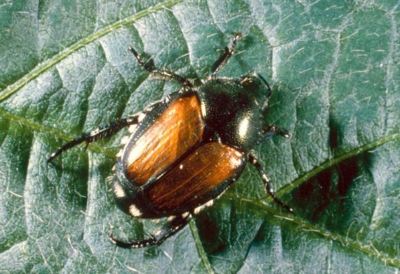The Japanese beetles are known to cause serious damage to your landscape, as they feed on the leaves and the flowers of your plants, and thus, it can cause defoliation, deterioration, and possibly  death. The adult Japanese beetle feeds on the foliage of more than 300 species of plants.
death. The adult Japanese beetle feeds on the foliage of more than 300 species of plants.
These insects were first found in the United States around 1916. Before that, the Japanese beetle was thought to occur only in Japan, where it is not considered to be a major pest. However, there are many other beetles in the family of the Japanese beetle that feed on the roots of the grasses, but the Japanese beetle remains as the worst pest.
This beetle is a widespread and a destructive pest of turf, landscape, and also of the ornamental plants. These insects are known to cause a multitude of damage to the plants, vegetable crops, and even to the rose bushes, etc. It is mainly attracted to the leaves that are produced by these plants. The larvae or the grubs feed on a variety of roots of ornamental trees, shrubs, green plants, and grass as well. Due to the favorable climate in the United States of American, the large areas of grass are affected by developing grubs. The destructive feeding habits of the Japanese beetles are what make them such a nuisance to bear.
The adult Japanese beetle makes their way out of the soil in order to mate during the summer season. The eggs laid by the female are kept in the short burrows that they dig in the soil. The female Japanese beetle can lay around 40 to 60 eggs in her lifetime. The larvae stage of the beetles is known as grubs, which mainly feed on the roots that are present in the soil. The grubs pass the winter in an inactive state and resume the feeding and growing process in spring, thus, growing in the adult state by summer. The beetles can be easily recognized on the plants if you inspect the plant closely.
The adult Japanese beetles are active in flying as well, and so, you can see them flying them around in the yard or near the plants. The typical morphological feature of the insect helps in identifying the Japanese beetle with the occurrence of six pairs of white hair brushes around the margins of its abdomen. However, you can recognize its eggs easily as they are spherical, or cylindrical, or ellipsoidal in the initial stage, and as the embryo develops the egg becomes almost spherical. On the other hand, it is vital for you to know that both the adult and the grubs can cause equal damage to your plants.
If you are dealing with Japanese beetle infestation, contact SprayTech at 720.248.0000.
Comments are closed.